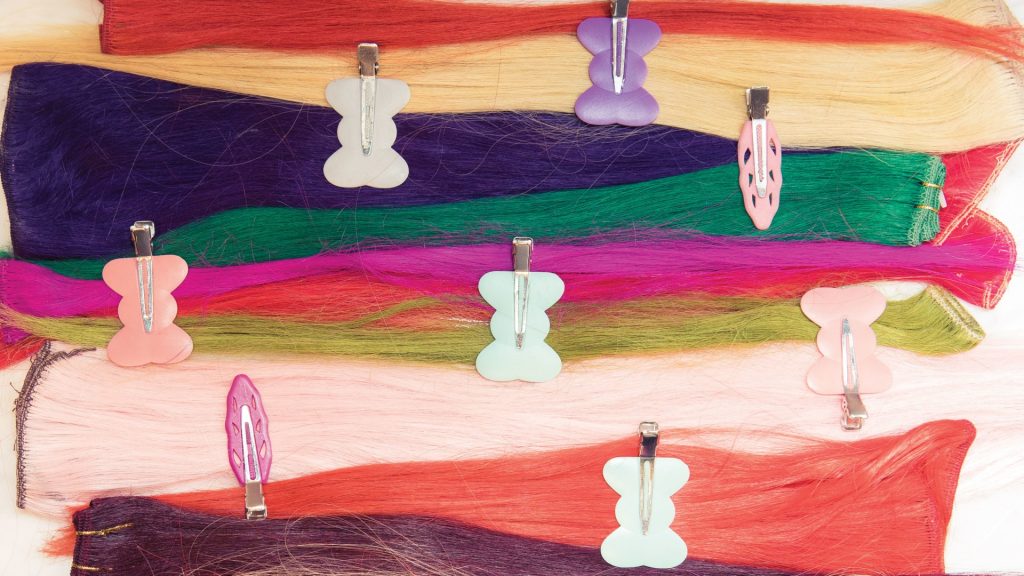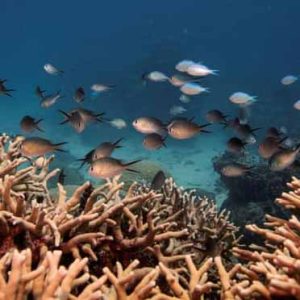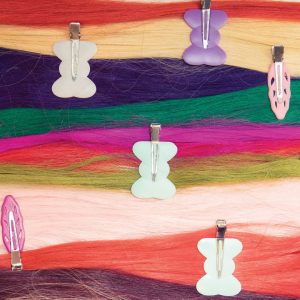Link About It: This Week’s Picks
From breakthroughs in health to historical discoveries and other innovations, news from around the internet

Scientists Succeed in Growing New Bones Using Sound Waves
 Using high-frequency sound waves, scientists at the Royal Melbourne Institute of Technology in Australia have managed to grow new bones out of stem cells. Having spent over a decade investigating how sound interacts with different materials, researchers developed a sound wave-generating device that can manipulate cells and fluids. “We can use the sound waves to apply just the right amount of pressure in the right places to the stem cells, to trigger the change process,” says co-lead researcher and professor Leslie Yeo. This innovative feat could crucially help patients who have lost bones to cancer or degenerative diseases—an imperative breakthrough as the current, experimental process requires extracting bone marrow which is expensive and painful. In contrast, this new approach is faster, simpler and more effective. “Our device is cheap and simple to use, so could easily be upscaled for treating large numbers of cells simultaneously,” continues Yeo. Now, the researchers are exploring how to scale their device to treat as many people as possible. Learn more about it at RMIT.
Using high-frequency sound waves, scientists at the Royal Melbourne Institute of Technology in Australia have managed to grow new bones out of stem cells. Having spent over a decade investigating how sound interacts with different materials, researchers developed a sound wave-generating device that can manipulate cells and fluids. “We can use the sound waves to apply just the right amount of pressure in the right places to the stem cells, to trigger the change process,” says co-lead researcher and professor Leslie Yeo. This innovative feat could crucially help patients who have lost bones to cancer or degenerative diseases—an imperative breakthrough as the current, experimental process requires extracting bone marrow which is expensive and painful. In contrast, this new approach is faster, simpler and more effective. “Our device is cheap and simple to use, so could easily be upscaled for treating large numbers of cells simultaneously,” continues Yeo. Now, the researchers are exploring how to scale their device to treat as many people as possible. Learn more about it at RMIT.
Image courtesy of RMIT
LSD’s Controversial Connection With Alcoholics Anonymous
 In a fascinating long-read, Katie McBride at Inverse traces the controversial and little-known connection between LSD and Alcoholics Anonymous. When co-founder and hero of the abstinence-only program, Bill Wilson, dropped acid 66 years ago, he had two decades sober and AA was in full swing. This experience would “fundamentally transform his outlook on recovery, horrify AA leadership and disappoint hundreds of thousands who had credited him with saving their lives.” Despite it being hushed up, Wilson believed that LSD was actually crucial to his ultimate recovery. He wrote in 1957, “I am certain that the LSD experience has helped me very much. I find myself with a heightened color perception and an appreciation of beauty almost destroyed by my years of depression… The sensation that the partition between ‘here’ and ‘there’ has become very thin is constantly with me.” Essentially, the belief centers on the fact that sobriety doesn’t always cure depression. As McBride says, “Mind-altering drugs are not always antithetical to sobriety. Instead, psychedelics may be a means to achieve and maintain recovery from addiction.” Read the full story at Inverse.
In a fascinating long-read, Katie McBride at Inverse traces the controversial and little-known connection between LSD and Alcoholics Anonymous. When co-founder and hero of the abstinence-only program, Bill Wilson, dropped acid 66 years ago, he had two decades sober and AA was in full swing. This experience would “fundamentally transform his outlook on recovery, horrify AA leadership and disappoint hundreds of thousands who had credited him with saving their lives.” Despite it being hushed up, Wilson believed that LSD was actually crucial to his ultimate recovery. He wrote in 1957, “I am certain that the LSD experience has helped me very much. I find myself with a heightened color perception and an appreciation of beauty almost destroyed by my years of depression… The sensation that the partition between ‘here’ and ‘there’ has become very thin is constantly with me.” Essentially, the belief centers on the fact that sobriety doesn’t always cure depression. As McBride says, “Mind-altering drugs are not always antithetical to sobriety. Instead, psychedelics may be a means to achieve and maintain recovery from addiction.” Read the full story at Inverse.
Image courtesy of Fiona Art/Pexels
“Once-in-a-Lifetime” Roman Mosaic Discovered in London
 Archeologists from the Museum of London Archeology recently uncovered the largest Roman mosaic found in the British capital in half a century. Located on a new development in Southwark (that is outside the bounds of what is believed to be Roman Londinium), the mosaic comes from a decorative dining room floor, dating around the late 2nd or early 3rd century AD. Replete with intricate, colorful tiles and geometric designs, the artwork was found alongside jewelry, lavishly painted walls and terrazzo-style floors, suggesting the mosaic stems from a mansio, a roadside resting place for Roman officials. Archeologists also believe a hidden mosaic could lie underneath the first. As the site’s supervisor Antonietta Lerz puts it, “This is a once-in-a-lifetime find in London.” Learn more about it at The Art Newspaper.
Archeologists from the Museum of London Archeology recently uncovered the largest Roman mosaic found in the British capital in half a century. Located on a new development in Southwark (that is outside the bounds of what is believed to be Roman Londinium), the mosaic comes from a decorative dining room floor, dating around the late 2nd or early 3rd century AD. Replete with intricate, colorful tiles and geometric designs, the artwork was found alongside jewelry, lavishly painted walls and terrazzo-style floors, suggesting the mosaic stems from a mansio, a roadside resting place for Roman officials. Archeologists also believe a hidden mosaic could lie underneath the first. As the site’s supervisor Antonietta Lerz puts it, “This is a once-in-a-lifetime find in London.” Learn more about it at The Art Newspaper.
Image courtesy of MOLA / Andy Chopping
New Study Reveals What Fish Talk About
 Scientists have found that acoustic communication under the sea is relied upon by fish even more than previously believed. These “boops, honks and hoots” (though some make noises akin to croaks and hums) are “a major mode of communication among fish, rather than just limited to a few oddballs.” Published in the scientific journal Ichthyology & Herpetology, the paper by Cornell University researchers reveals that fish mostly talk about sex and food, and some (like the very chatty codfish) even have different regional accents that could be “strong enough that others in their species may find them hard to understand.” Find out more about these deep conversations at The Guardian.
Scientists have found that acoustic communication under the sea is relied upon by fish even more than previously believed. These “boops, honks and hoots” (though some make noises akin to croaks and hums) are “a major mode of communication among fish, rather than just limited to a few oddballs.” Published in the scientific journal Ichthyology & Herpetology, the paper by Cornell University researchers reveals that fish mostly talk about sex and food, and some (like the very chatty codfish) even have different regional accents that could be “strong enough that others in their species may find them hard to understand.” Find out more about these deep conversations at The Guardian.
Image courtesy of Lucas Jackson/Reuters
Rebundle Makes Hair Extensions From Bananas
 While commonly used, synthetic hair is toxic for the environment and detrimental to scalp health. Made from fine plastic fibers—like acrylic, polyester and polyvinyl chloride—that are also reliant on fossil fuels, hair extensions often lead to scalp irritation and inflammation. As Black women who rely on these extensions for cornrows and braids, Ciara Imani May and Danielle Washington know this all too well. That’s why they launched Rebundle, a start-up turning banana fibers into plant-based hair. Rebundle also supports farmers by sourcing their extra bananas. Biodegradable, non-toxic and organic, this proprietary hair is not only better for the planet but it is also safer for scalps. Read more about this innovative hair and how Washington and May are revolutionizing the industry at Atmos.
While commonly used, synthetic hair is toxic for the environment and detrimental to scalp health. Made from fine plastic fibers—like acrylic, polyester and polyvinyl chloride—that are also reliant on fossil fuels, hair extensions often lead to scalp irritation and inflammation. As Black women who rely on these extensions for cornrows and braids, Ciara Imani May and Danielle Washington know this all too well. That’s why they launched Rebundle, a start-up turning banana fibers into plant-based hair. Rebundle also supports farmers by sourcing their extra bananas. Biodegradable, non-toxic and organic, this proprietary hair is not only better for the planet but it is also safer for scalps. Read more about this innovative hair and how Washington and May are revolutionizing the industry at Atmos.
Image courtesy of Coveteur/Trunk Archive
Dana Kearley’s Artwork Explores and De-Stigmatizes Disability and Chronic Illness
 Through her bright, cute and cheerful illustrations, Vancouver-based artist Dana Kearley explores and communicates the many nuanced ways that people exist and move through the world with disabilities and illness—de-stigmatizing it along the way. Her works often feature worms, snails and turtles, animals that “symbolize the way some of us move though the world, at a slower pace, but we’re still going in the same direction,” Kearley tells Elfie Thomas at It’s Nice That. Other creatures are used to communicate specific body parts and illnesses—for instance, butterflies are the pelvic bone. Kearley not only explores her own experiences in a “sick and disabled body,” but also hopes to create healing and understanding in others. Read the full interview at It’s Nice That.
Through her bright, cute and cheerful illustrations, Vancouver-based artist Dana Kearley explores and communicates the many nuanced ways that people exist and move through the world with disabilities and illness—de-stigmatizing it along the way. Her works often feature worms, snails and turtles, animals that “symbolize the way some of us move though the world, at a slower pace, but we’re still going in the same direction,” Kearley tells Elfie Thomas at It’s Nice That. Other creatures are used to communicate specific body parts and illnesses—for instance, butterflies are the pelvic bone. Kearley not only explores her own experiences in a “sick and disabled body,” but also hopes to create healing and understanding in others. Read the full interview at It’s Nice That.
Image courtesy of Dana Kearley, “Disabled Snowperson” (Copyright © Dana Kearley, 2021)
Remains of World’s Largest Pterosaur Discovered in Scotland
 The earliest animal known to have the ability to fly is the pterosaur. It was commonly believed that during the Jurassic era these reptiles were small in stature but with a wingspan of up to six feet. Now this belief is being overturned. On Scotland’s Isle of Skye, scientists found the remains of Dearc sgiathanach (the name of the world’s largest known pterosaur and flying animal) embedded in limestone in rare completeness, with a wingspan larger than a king-size bed, raising questions about our understanding of pterosaurs and their evolution from the Jurassic period. Further, this creature was still growing at the time of its death. Learn more about the astonishing discovery at USA Today.
The earliest animal known to have the ability to fly is the pterosaur. It was commonly believed that during the Jurassic era these reptiles were small in stature but with a wingspan of up to six feet. Now this belief is being overturned. On Scotland’s Isle of Skye, scientists found the remains of Dearc sgiathanach (the name of the world’s largest known pterosaur and flying animal) embedded in limestone in rare completeness, with a wingspan larger than a king-size bed, raising questions about our understanding of pterosaurs and their evolution from the Jurassic period. Further, this creature was still growing at the time of its death. Learn more about the astonishing discovery at USA Today.
Image courtesy of Natalia Jagielska
Link About It is our filtered look at the web, shared daily in Link and on social media, and rounded up every Saturday morning. Hero image courtesy of Coveteur/Trunk Archive












